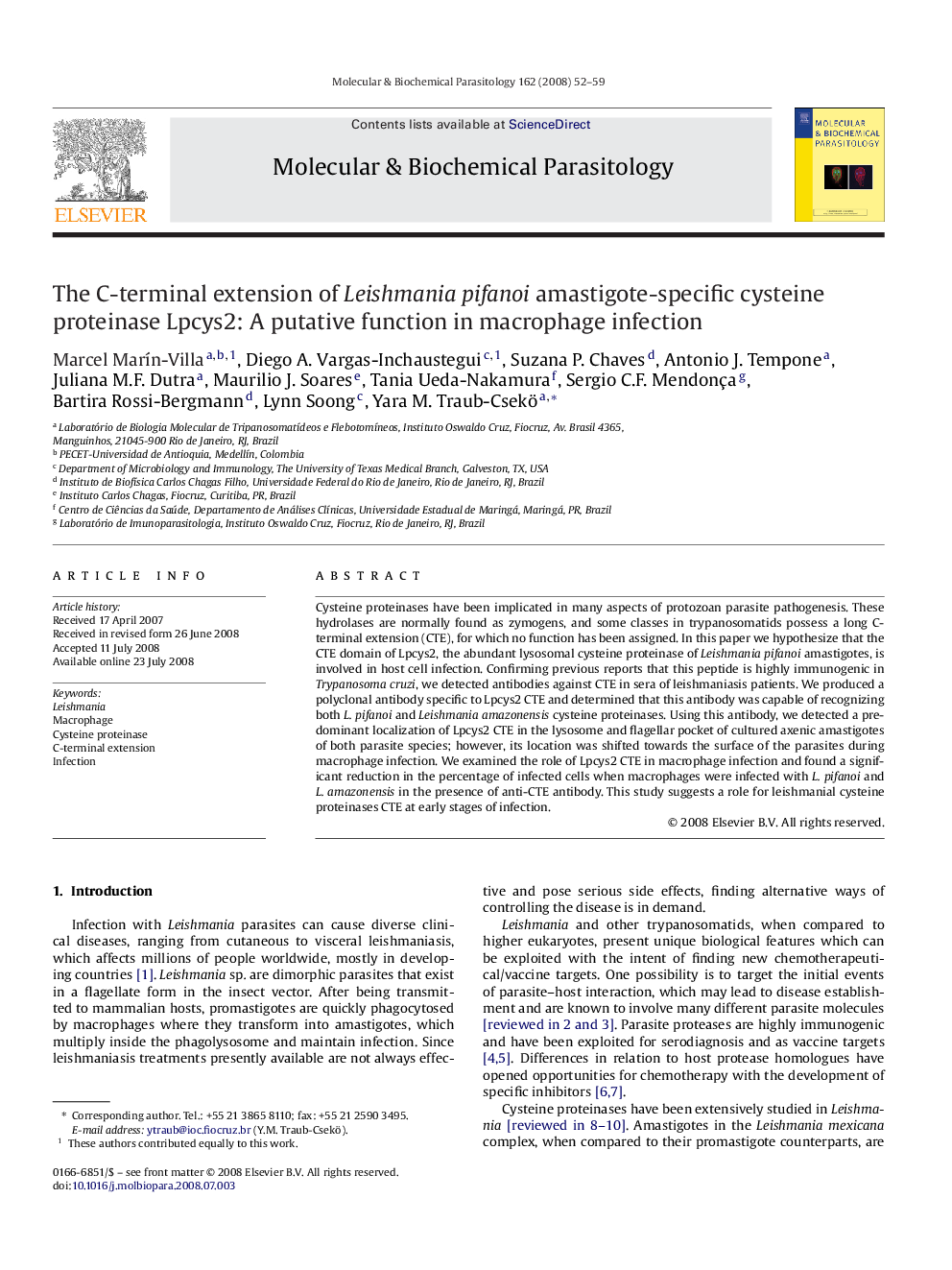| Article ID | Journal | Published Year | Pages | File Type |
|---|---|---|---|---|
| 2830095 | Molecular and Biochemical Parasitology | 2008 | 8 Pages |
Cysteine proteinases have been implicated in many aspects of protozoan parasite pathogenesis. These hydrolases are normally found as zymogens, and some classes in trypanosomatids possess a long C-terminal extension (CTE), for which no function has been assigned. In this paper we hypothesize that the CTE domain of Lpcys2, the abundant lysosomal cysteine proteinase of Leishmania pifanoi amastigotes, is involved in host cell infection. Confirming previous reports that this peptide is highly immunogenic in Trypanosoma cruzi, we detected antibodies against CTE in sera of leishmaniasis patients. We produced a polyclonal antibody specific to Lpcys2 CTE and determined that this antibody was capable of recognizing both L. pifanoi and Leishmania amazonensis cysteine proteinases. Using this antibody, we detected a predominant localization of Lpcys2 CTE in the lysosome and flagellar pocket of cultured axenic amastigotes of both parasite species; however, its location was shifted towards the surface of the parasites during macrophage infection. We examined the role of Lpcys2 CTE in macrophage infection and found a significant reduction in the percentage of infected cells when macrophages were infected with L. pifanoi and L. amazonensis in the presence of anti-CTE antibody. This study suggests a role for leishmanial cysteine proteinases CTE at early stages of infection.
